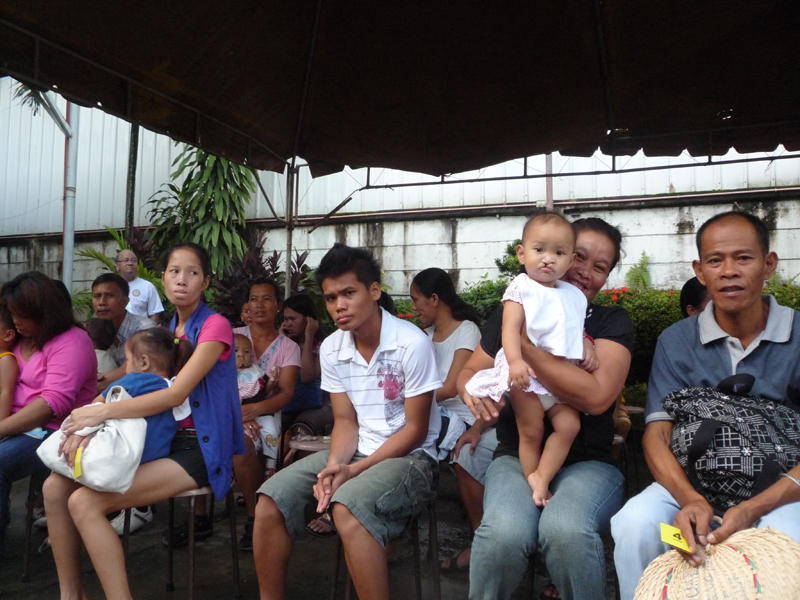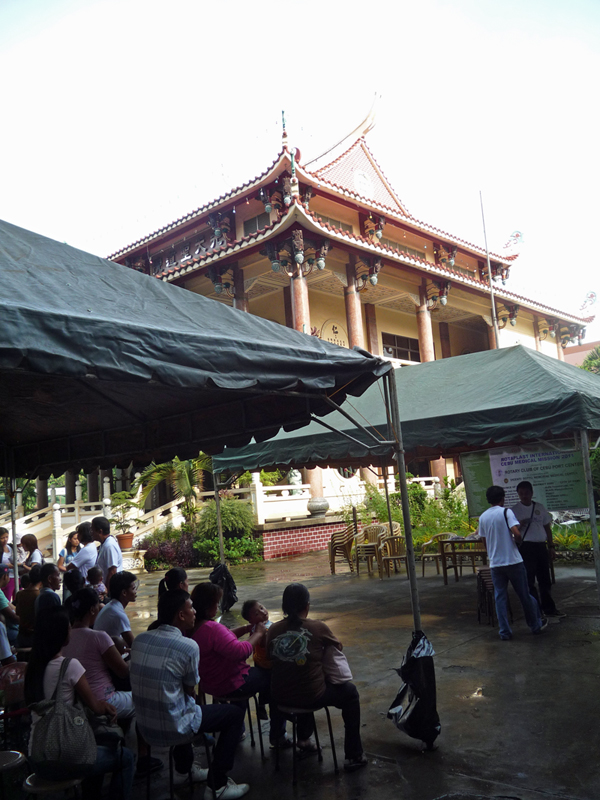Today’s blog is short because we were busy meeting patients! Intake clinic processes and prioritizes patients for the surgical schedule. The process requires all members of the team to be actively involved all day.
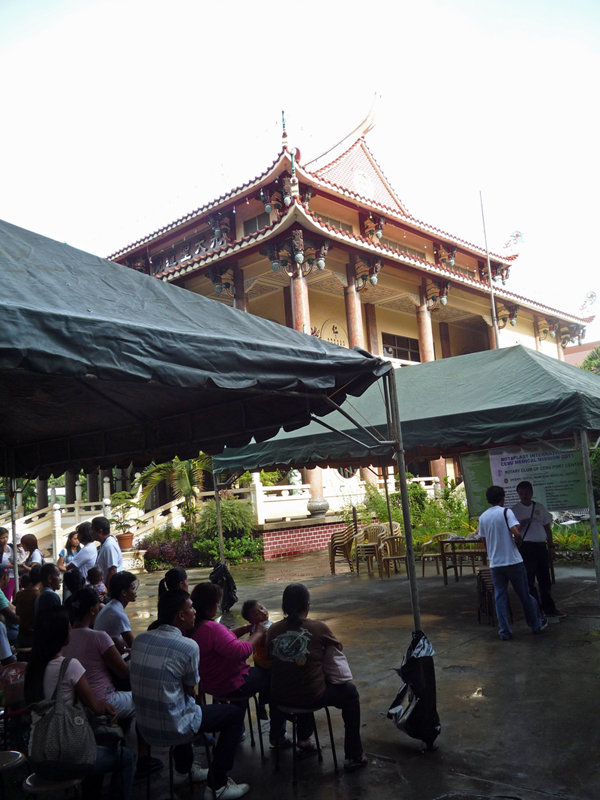
Patients arrive at the clinic held in an area that belongs to the Tian Sian Buddhist Temple, about thirty minutes from the hospital where we'll be working. The heat and humidity is oppressive in the buildings but even worse for those waiting outside. Rotarians from Cebu arranged for and placed tents in the parking area for patients and families to wait in an area as shaded as possible.
Emotions run pretty high during the intake clinic. Parents are apprehensive. There are language barriers to overcome. The staff is scrambling trying to make sure that the flow is smooth and efficient. The response from the kids ranges from being scared of absolutely everything – from the ink markers to stethoscopes - to one little boy who was so excited to be "made handsome" that he sang us all a song.
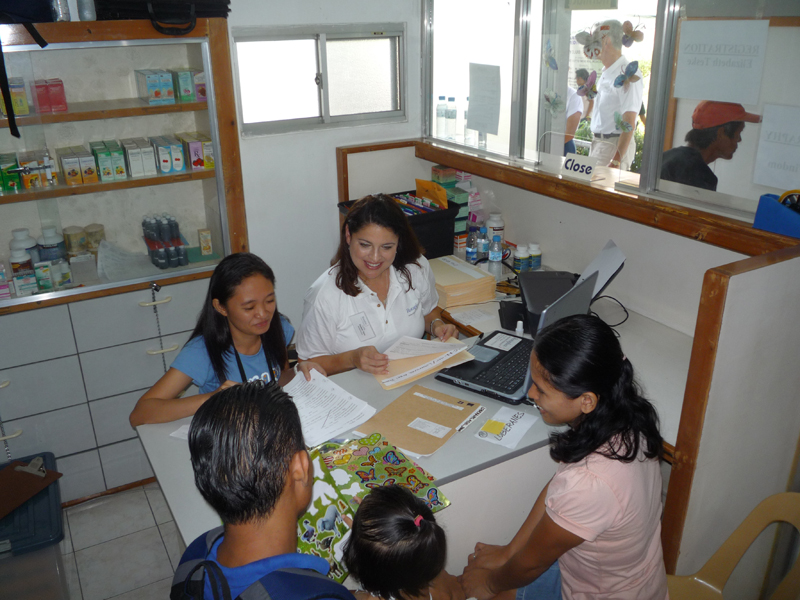
The first stop in the process is medical records where Lisa (assisted by Kem, a local nursing graduate) collects all essential demographic and patient identification information and assigns unique patient identification. Patients are then photographed and the picture is attached to the records to provide identification as well as a base line for the before/after photos. Patients are then seen by pediatricians, surgeons, anesthesiologists, and the dentist to ensure that there are no underlying conditions that may complicate or prevent surgery.
It can be a smooth, efficient process but it takes a tremendous amount of effort and the cooperation from the parents. Luckily, they are exceedingly patient and polite. Some of these families have been waiting a year or more to have their kids seen and evaluated for surgery. The stigma that these kids face is unbelievable yet the attitudes that we saw would warm the heart.
One mother was asked why she had waited so long to get her child seen. She said that while her husband was alive it was impossible. The husband felt that the child had been born that way for a reason and saw no need to make any changes. 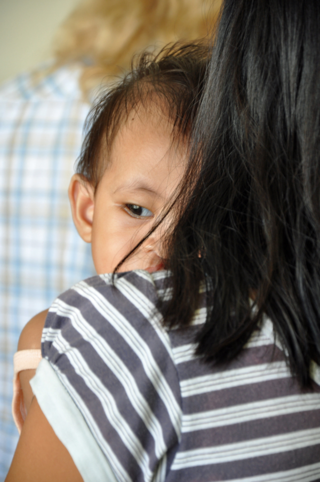
The priority for surgery is cleft lips for kids under age one, then cleft palate for kids under age 6, and then cleft palate/lip for those older than age six. All the potential patients are screened for anything which may raise the level of risk during surgery or recovery such as infections and reactions to medications. Because of the level of detail and the number of stations each patient has to navigate, most all the patients and families spent the entire day at the clinic waiting for word on if and when their child would have surgery. By the end of the day, we had established the initial surgical schedule and admitted the first set of patients to the hospital for surgery the next morning.
